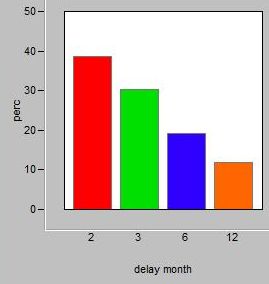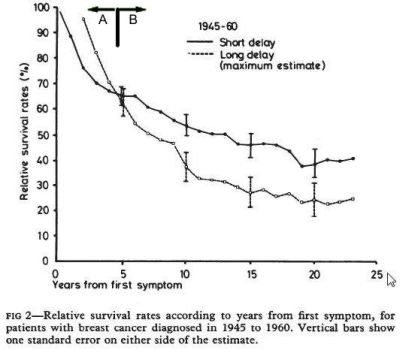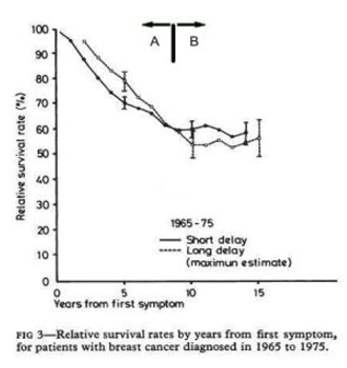In a study published in the BMJ (1) Elwood and Morehead
studied the effect of treatment delay on survival of 1591 females with breast
cancer in British Columbia. The interval between the first symptom and treatment
was recorded and correlated with survival. The chart depicts the distribution
of delay times among the patients
 |
The following figures were copied from the original publication. Figure
2 depicts relative survival of two groups experiencing short and long delay.
Up to the fifth year (marked by an A) survival of the long delayed was better
than that of the short delayed. Later on (marked by a B) the short delayed
had a better survival. A similar crossing over of the relative survival
curves occurs after the tenth year (Fig. 3)
 |
 |
Although the difference between the curves was not significant (not even in Fig. 2) the trend is obvious.
References
1. Elwood MJ and Moorehead WP Delay in diagnosis and long-erm survival in breast cancer.
British Medical Journal 31 May 1980 p. 1291-1294